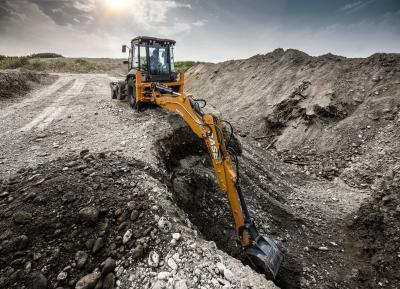For the 13th consecutive year, fall protection rules again topped OSHA’s list of most-cited violations in 2023.
For 13 years running now, fall protection has hamstrung contractors and their safety directors. During that time, it has become OSHA's most frequently cited infraction. It remains the most cited this year.
During the National Safety Council's (NSC) Safety Congress and Expo held this fall, OSHA's Eric Harbin gave preliminary stats on the top 10 most cited standards.
For the second year in a row, the agency's Hazard Communication standard came in at number two.
"Incredible" advancements are made in safety each year, said Lorraine Martin, NSC president and CEO. But "we continue to see many of the same types of violations appear on OSHA's Top 10 list," she added.
Mitigating the Risk
OSHA put a major emphasis on its fall hazards program this year as a way to help mitigate the safety risks to both workers and employers.
The national emphasis program (NEP) has no expiration date, said employment attorneys of Ogletree Deakins.
According to the NSC, 136 workers died and nearly 128,000 were injured in same-level falls.
Bureau of Labor Statistics data shows that of the 5,190 fatal workplace injuries in 2021, 680 were associated with falls from elevations. That equates to approximately 13 percent of all deaths, reported Ogletree Deakins, noting that the NEP should come as no surprise to contractors.
"Particularly those in the construction industry," said John D. Surma, a Houston, Texas, shareholder, and Jaslyn Johnson, an associate, Atlanta, Ga.
"BLS data shows that ‘fatalities caused by falls continue to be a leading cause of death for all workers.'"
The number of violations is more than double the next most frequently cited standard, hazard communication.
The NEP combines enforcement through hazard-based inspection targeting and locally generated programmed targeting in construction. The goal is to significantly reduce or eliminate unprotected worker exposures to fall-related hazards that can result in serious injuries and deaths.
"Interestingly, locally generated programmed targeting in construction under the NEP is optional," said Surma and Johnson.
"The NEP only encourages OSHA regional and area offices to develop targeting methods that effectively reach industry sectors where fall protection is often lacking. Ultimately, the NEP gives regional and area offices considerable discretion in how much effort, if any, to devote to programmed enforcement."
The two from Ogletree Deakins noted nearly 31 percent of OSHA's inspections from 2014 through 2021 were related to falls.
"And from 2017 through the present, the most common standard for which OSHA conducted inspections, issued citations and imposed penalties, has been fall protection in residential construction."
The law firm said with inspections opened upon infraction observation, employers could expect to see increased inspections related to falls in 2023.
Statistics Pile Up
OSHA's fall protection standard guides contractors in where fall protection is required, which systems are appropriate given the situation. It also outlines proper construction and installation of safety systems and the proper prevention supervision, according to Safety and Health Magazine.
S&H noted the standard is designed to protect employees on walking-working surfaces with an unprotected side or edge above 6 ft.
There were more than 5,000 violations of the standard's section related to residential construction at 6 ft. or more above lower levels.
These workers are to be protected by guardrails, safety nets or personal fall arrest systems "unless another provision … provides for an alternative measure."
The section related to walking-working surfaces with an unprotected edge at 6 ft. or higher saw 931 violations.
According to OSHA, workers in this situation also must be protected by a guardrail, safety net or fall-arrest system.
OSHA's second most cited standard, that of hazard communication, applies to chemical hazards, both those produced in the workplace and those imported.
"It also governs the communication of those hazards to workers," reported S&H, adding that this standard had 2,683 violations in 2022.
The number one section related to written hazard communication covering labels and other forms of writing had 1,136 violations.
Employers must develop, implement and maintain a written program that at least describes how the criteria specified in this section for labels, Safety Data Sheets (SDS) and employee information and training will be met.
The next highest number of hazard communication violations had to do with effective information and training on hazardous chemicals.
"Employers shall provide … effective information and training on hazardous chemicals in their work area at the time of their initial assignment."
The standard also requires employers to provide info and training whenever a chemical hazard new to employees is introduced into their work area.
"Information and training may be designed to cover categories of hazards or specific chemicals," said OSHA. "Chemical-specific information must always be available through labels and SDS."
Maintaining workplace copies of SDS for each hazardous chemical was the next highest number of logged infractions at 363.
This section requires employers to ensure these SDS "are readily accessible during each work shift to workers in their work areas."
Workplace labeling came up next with 315 infractions. "The employer shall ensure each container of hazardous chemicals … is labeled, tagged or marked."
Finally, OSHA requires chemical manufacturers and importers to obtain or develop an SDS for each hazardous chemical they produce or import.
"Employers shall have a Safety Data Sheet in the workplace for each hazardous chemical which they use." This infraction was cited 252 times.
Violations to the OSHA standard applicable to powered industrial trucks was among the top 10. The agency logged 2,561 violations of this standard.
The rule covers the design, maintenance and operation of powered industrial trucks, including forklifts and motorized hand trucks and their operator training.
There were 606 violations to the section on safe operation; 336 on refresher training and evaluation; and 309 having to do with certification.
"The employer shall certify that each operator has been trained and evaluated as required by this paragraph (l)," stated OSHA.
The certification must include the name of the operator, date of training, date of evaluation and identity of the person(s) performing training or evaluation.
"Industrial trucks shall be examined before being placed in service," according to the standard.
The machines "shall not be placed in service if the examination shows any condition adversely affecting the safety of the vehicle."
The agency requires that such an examination be made at least daily. For round-the-clock usage, the trucks must be examined after each shift.
"Defects when found shall be immediately reported and corrected," according to OSHA, which logged 178 violations to this rule.
"If at any time a powered industrial truck is found to be in need of repair, defective or in any way unsafe, the truck shall be taken out of service," stated OSHA.
It is out of service, "until it has been restored to safe operating condition." That violation was logged 173 times.
There were 2,554 violations to OSHA's lockout/tagout standard this year. In 2022, violations numbered 2,175.
Minimum performance standards for the control of hazardous energy during machine servicing and maintenance are outlined in this standard.
Energy control procedure saw 730 violations; training and communication, 491 violations; and periodic inspection, 362.
The section related to establishment of a program for energy control procedures, training and inspections had 265 infractions.
It is meant to ensure before any employee performs any servicing or maintenance that the machine or equipment is isolated from the energy source.
OSHA also logged infractions of eye and face protection rules under personal protective and lifesaving equipment.
The agency noted that there were 2,074 violations in 2023, compared with 1,582 last year. It came in ninth on the top 10 list.
The standard addresses "appropriate personal protective equipment for workers exposed to eye and face hazards."
These hazards include flying particles and chemical gases or vapors encountered on the job.
Most often cited was the section related to employer assurance each worker uses appropriate eye or face protection with 2,034 violations.
Flying particles, molten metal, liquid chemicals, acids or caustic liquids, chemical gases or vapors or potentially injurious light radiation are listed.
The second most common infraction, with 32 citations, regards side protection for the eyes when there is a hazard from flying objects.
"Detachable side protectors (e.g., clip-on or slide-on side shields) meeting the pertinent requirements of this section are acceptable," stated OSHA.
The standard section on contractor compliance with consensus standards was violated six times.
Finally, the use of prescription lenses, as prescribed, in operations involving eye hazards was cited twice this year.
OSHA requires that the employer ensure each affected employee who wears prescription lenses actually wears said eye protection. The user must wear lenses or protection can be worn over lenses without disturbing the position of the prescription or protective lenses.
Machine guarding infractions were logged by OSHA 1,644 times this year. There were 1,488 violations in 2022.
This standard protects employees "from hazards, including those created by point of operation, ingoing nip points, rotating parts, flying chips and sparks."
Types of guarding, with 1,089 violations; point of operation guarding, 402 violations; general requirements infractions, 60 and anchoring fixed machinery, 57, were most cited.
So was the section related to barrels, containers and drums. There were 13 infractions specifically related to revolving devices.
OSHA requires they "be guarded by an enclosure that is interlocked with the drive mechanism, so that the [device] cannot revolve unless the guard enclosure is in place.
In her comments about the top 10 violations in general, Martin of the NSC called for unity in the safety community.
"We must come together to acknowledge these persistent trends and identify solutions to better protect workers." CEG
Today's top stories






















